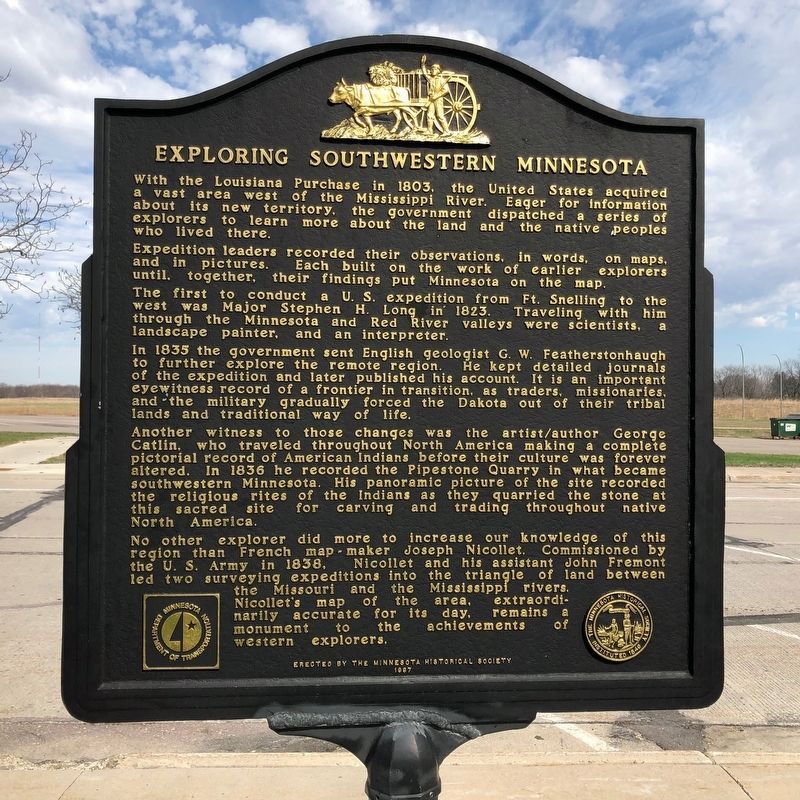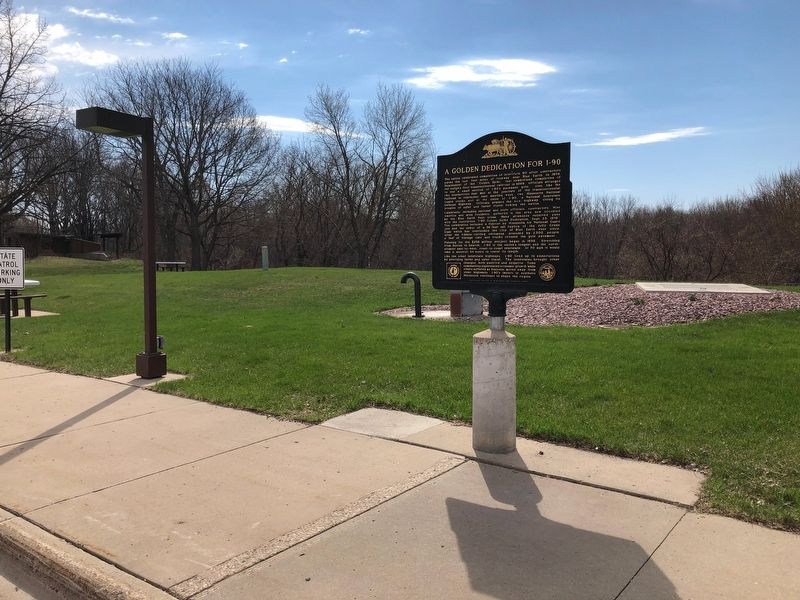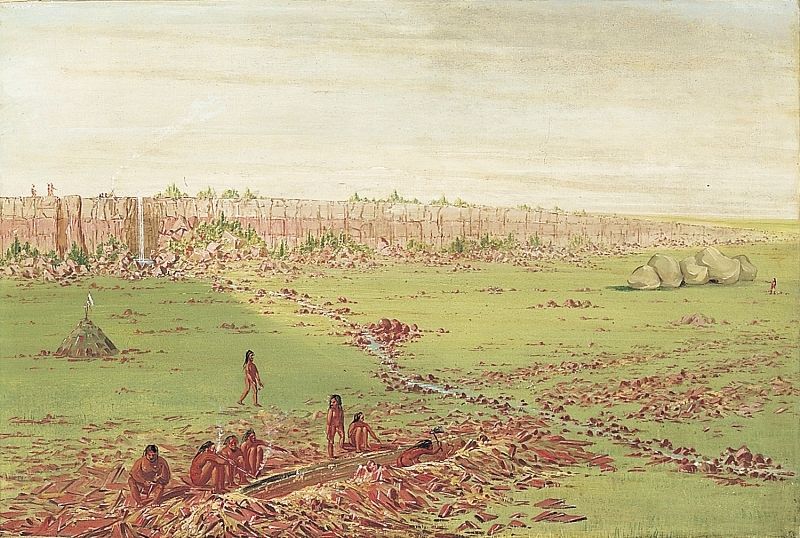Near Blue Earth in Faribault County, Minnesota — The American Midwest (Upper Plains)
Exploring Southwestern Minnesota
Expedition leaders recorded their observations in words, on maps, and in pictures. Each built on the work of earlier explorers until, together, their findings put Minnesota on the map.
The first to conduct a U.S. expedition form Ft. Snelling to the west was Major Stephen H. Long in 1823. Traveling with him through the Minnesota and Red River valleys were scientists, a landscape painter, and an interpreter.
In 1835 the government sent English geologist G.W. Featherstonhough to further explore the remote region. He kept detailed journals of the expedition and later published his account. It is an important eyewitness record of a frontier in transition, as traders, missionaries, and the military gradually forced the Dakota out of their tribal lands and traditional way of life.
Another witness to those changes was the artist/author George Catlin, who traveled throughout North America making a complete pictorial record of American Indians before their culture was forever altered. In 1836 he recorded the Pipestone Quarry in what became southwestern Minnesota. Hs panoramic picture of the site recorded the religious rites of the Indians as they quarried the stone at this sacred site for carving and trading throughout native North America.
No other explorer did more to increase our knowledge of this region than French map-maker Joseph Nicollet. Commissioned by the U.S. Army in 1838, Nicollet and his assistant John Fremont led two surveying expeditions into the triangle of land between the Missouri and the Mississippi rivers. Nicollet's map of the area, extraordinarily accurate for its day, remains a monument to the achievements of western explorers.
Erected 1997 by Minnesota Historical Society.
Topics and series. This historical marker is listed in these topic lists: Arts, Letters, Music • Exploration • Native Americans • Settlements & Settlers. In addition, it is included in the Minnesota Historical Society series list. A significant historical year for this entry is 1803.
Location. 43° 39.535′ N, 94° 6.711′ W. Marker is near Blue Earth, Minnesota, in Faribault County. Marker is on Interstate 90 at milepost 119, on the right when traveling east. Located at the Blue Earth rest area on I-90 East. Touch for map. Marker is in this post office area: Blue Earth MN 56013, United States of America. Touch for directions.
Other nearby markers. At least 6 other markers are within 16 miles of this marker, measured as the crow flies. A Golden Dedication for I-90 (here, next to this marker); Water Wisdom (within shouting distance of this marker); The Prairie's Gifts (approx. 0.4 miles away); A Golden Dedication for I-90 / Minnesota Agriculture (approx. 0.4 miles away); Pixley (approx. 10.7 miles away); Nashville Center (approx. 15.3 miles away).
Credits. This page was last revised on August 2, 2021. It was originally submitted on April 29, 2019, by Ruth VanSteenwyk of Aberdeen, South Dakota. This page has been viewed 323 times since then and 33 times this year. Last updated on August 1, 2021. Photos: 1, 2. submitted on April 29, 2019, by Ruth VanSteenwyk of Aberdeen, South Dakota. 3. submitted on April 29, 2019. • Mark Hilton was the editor who published this page.


